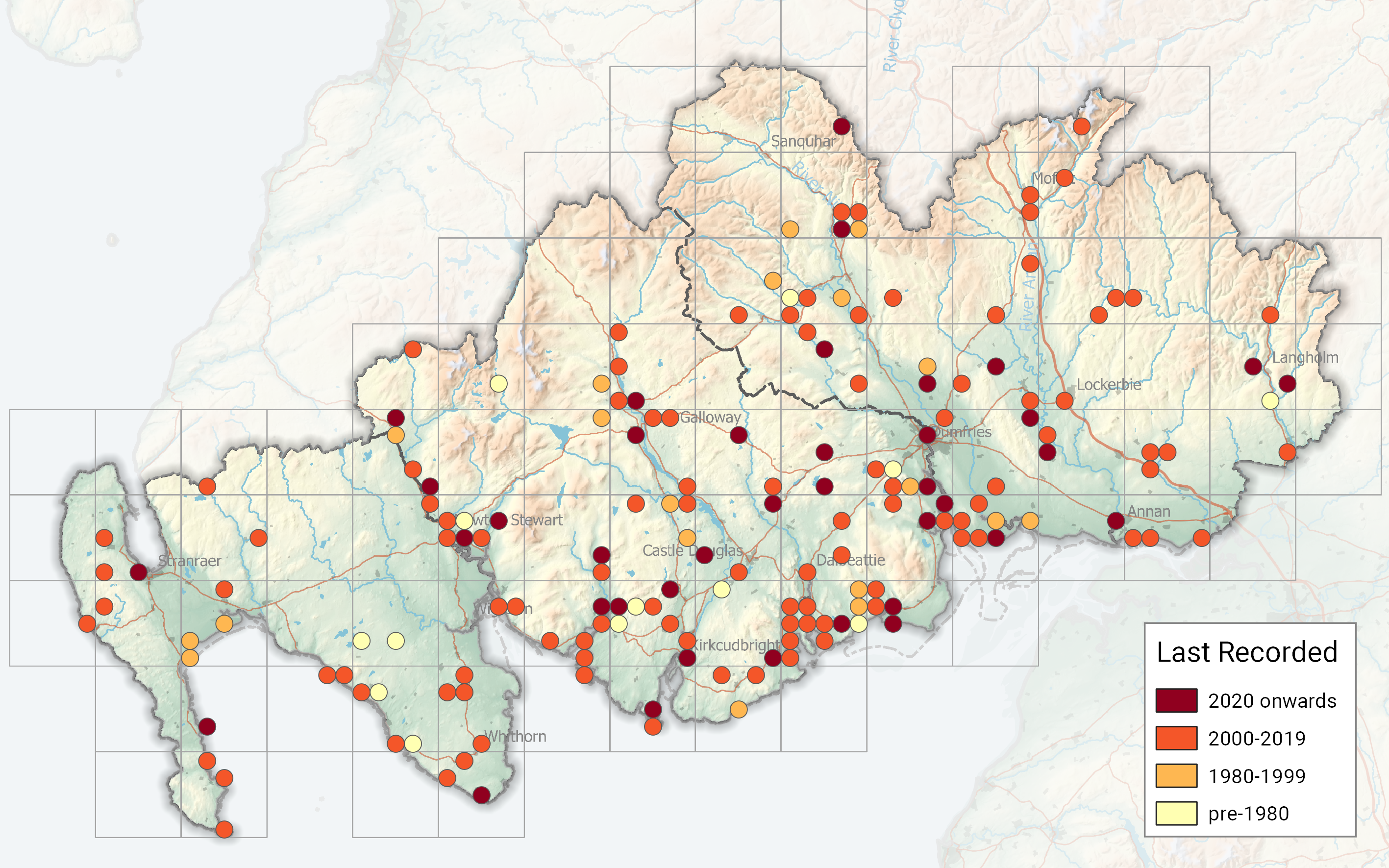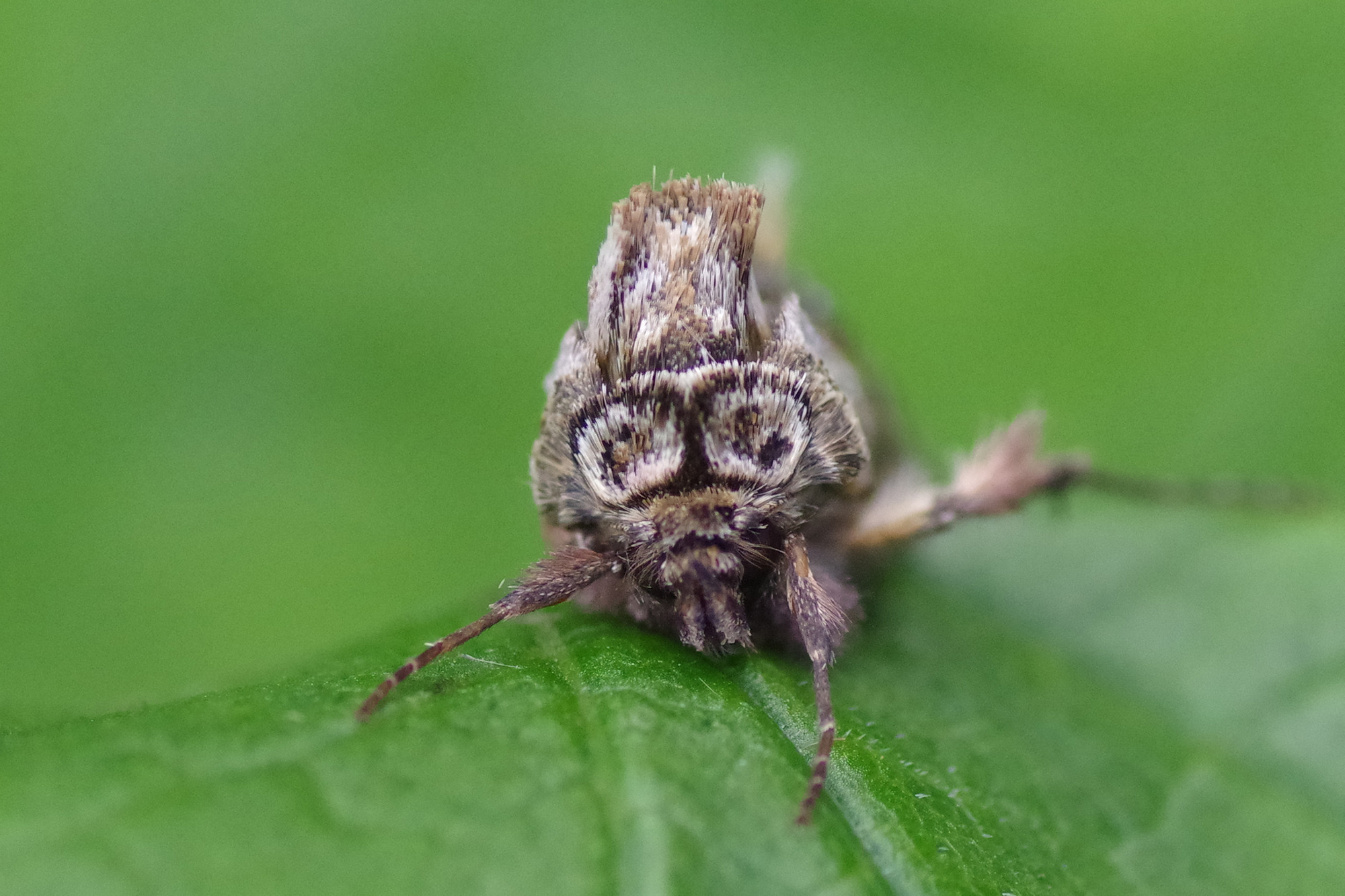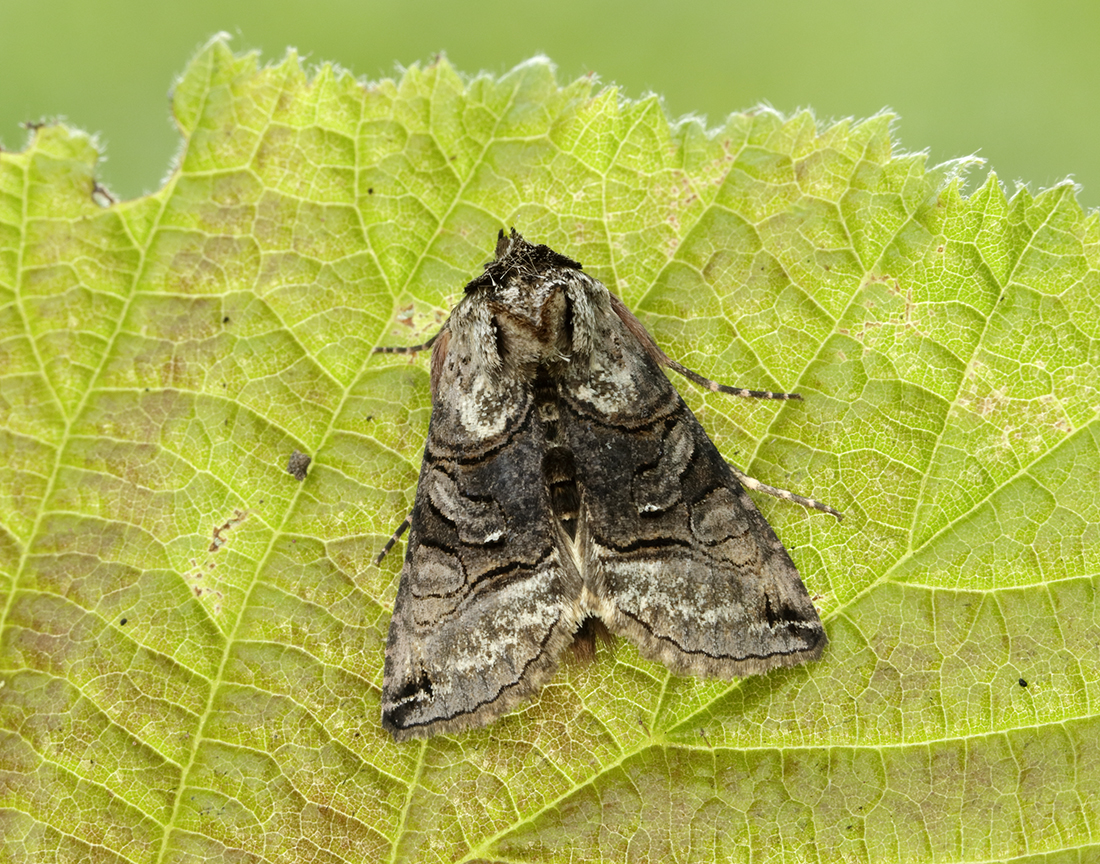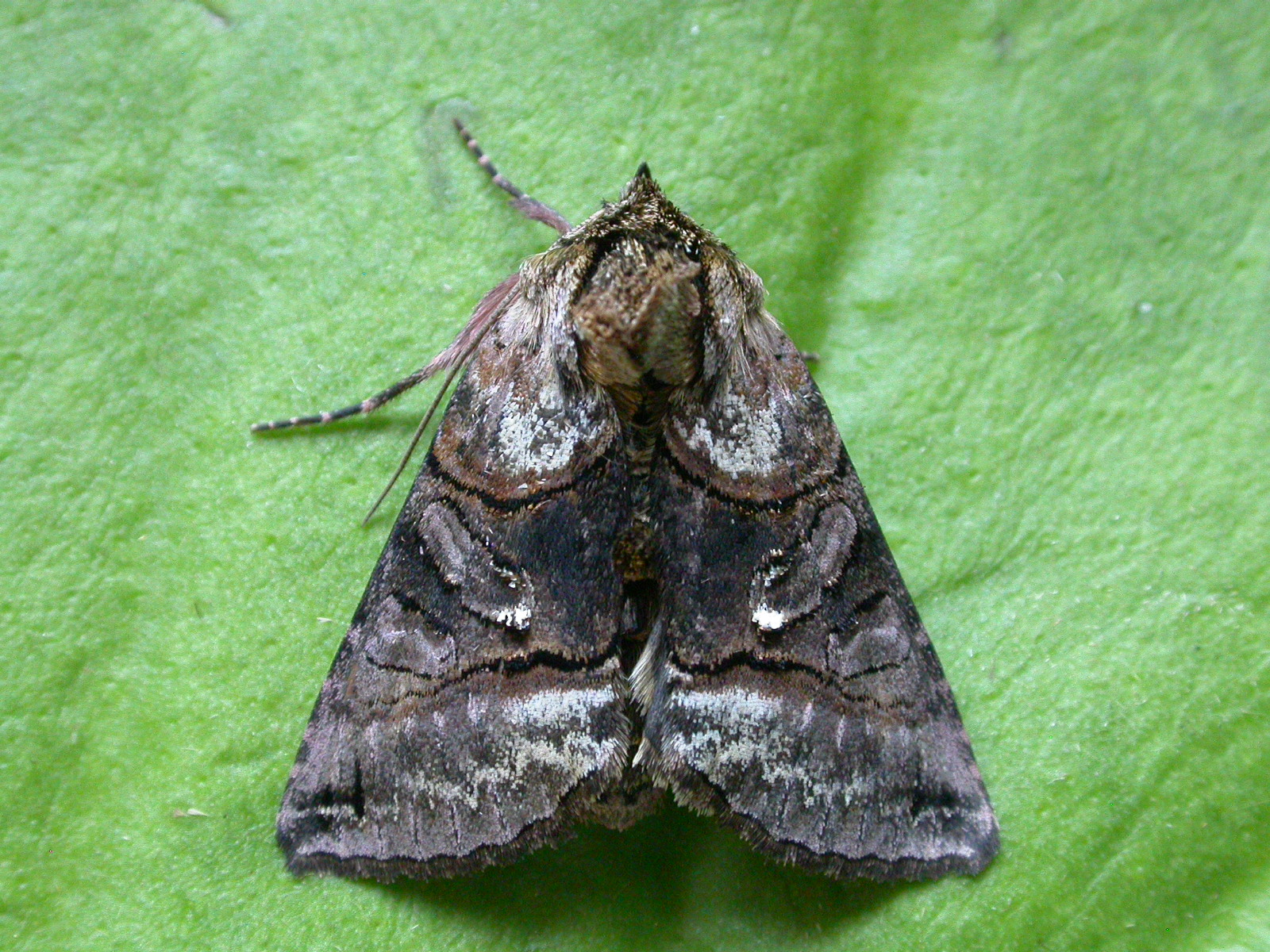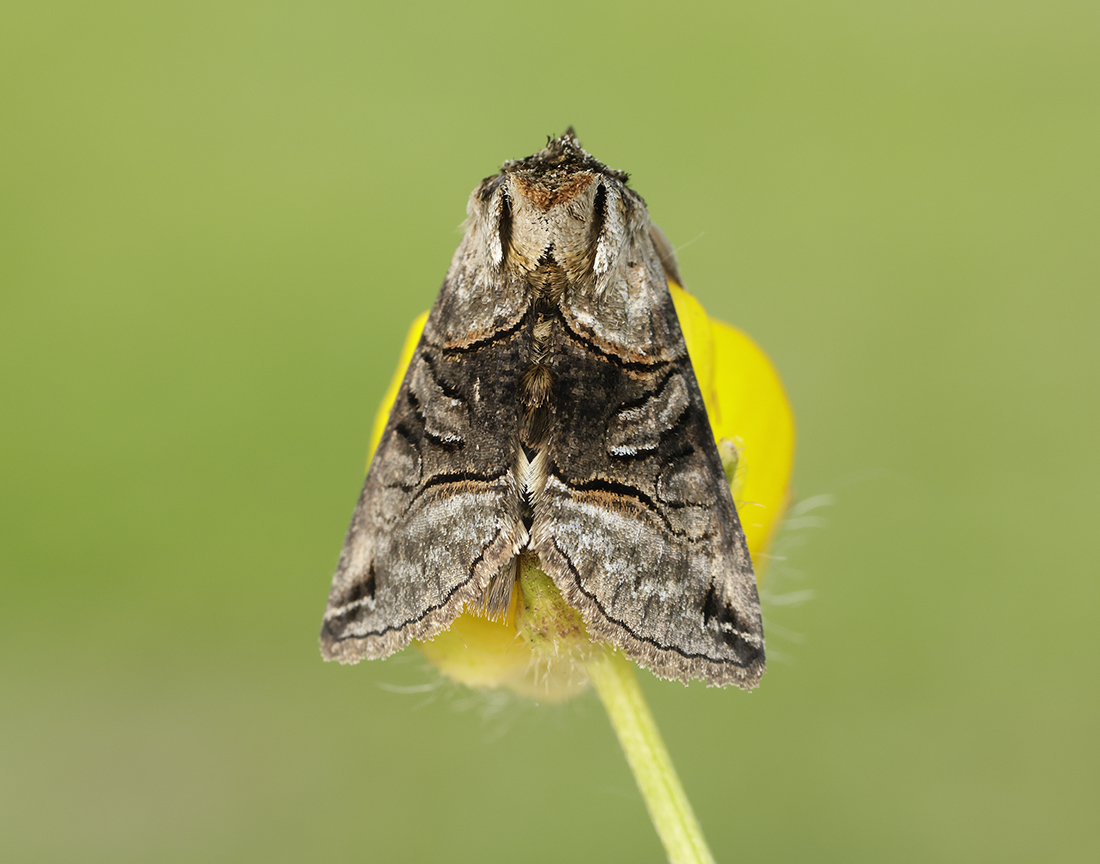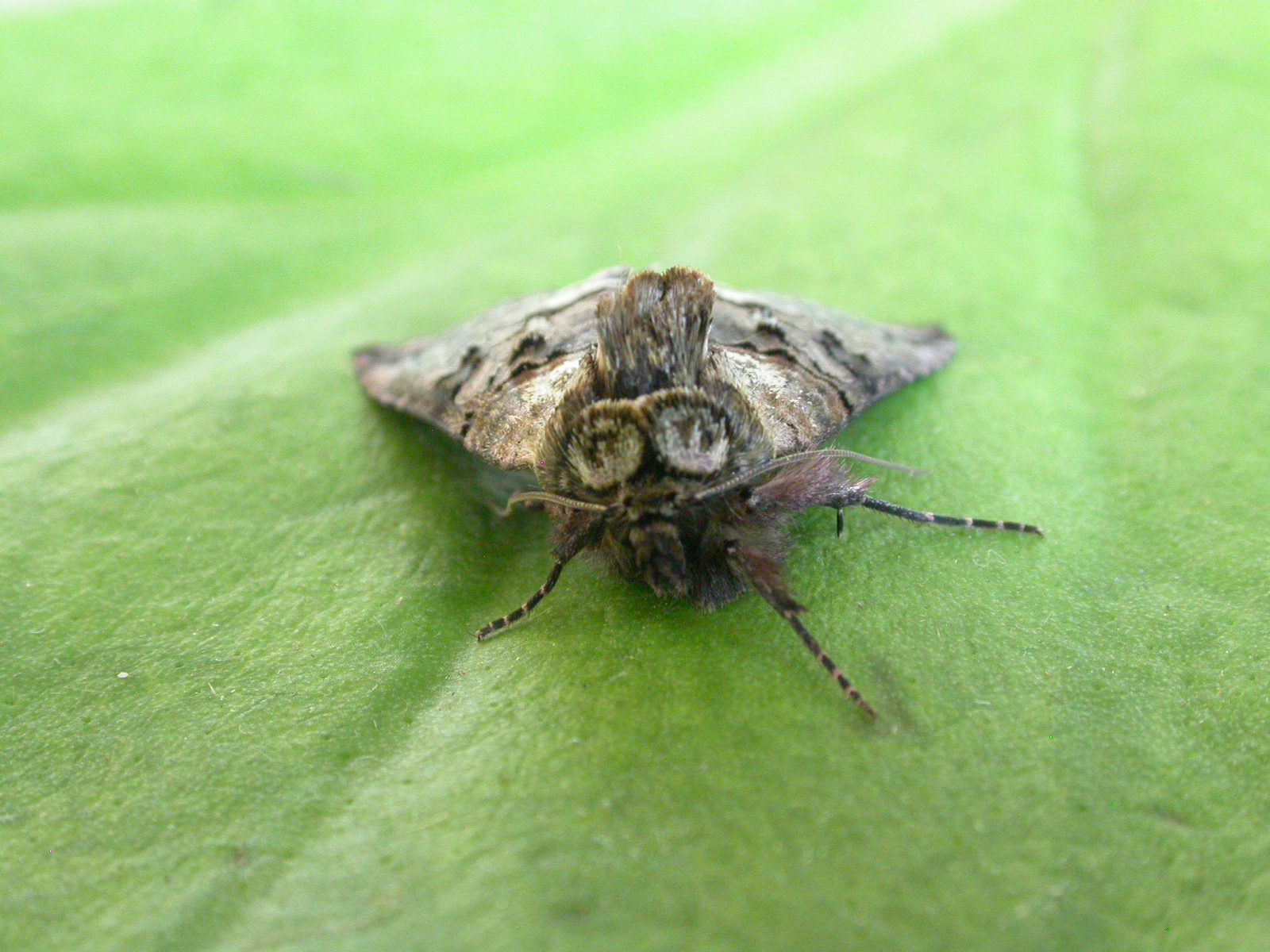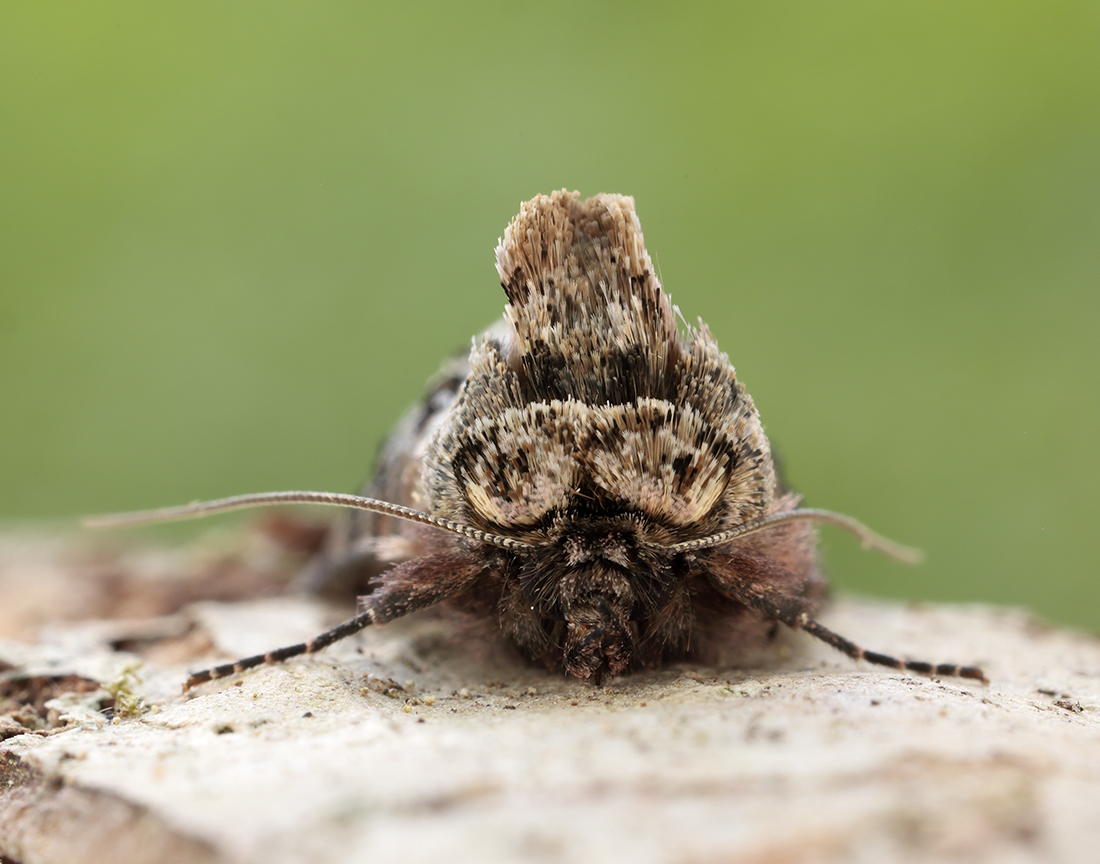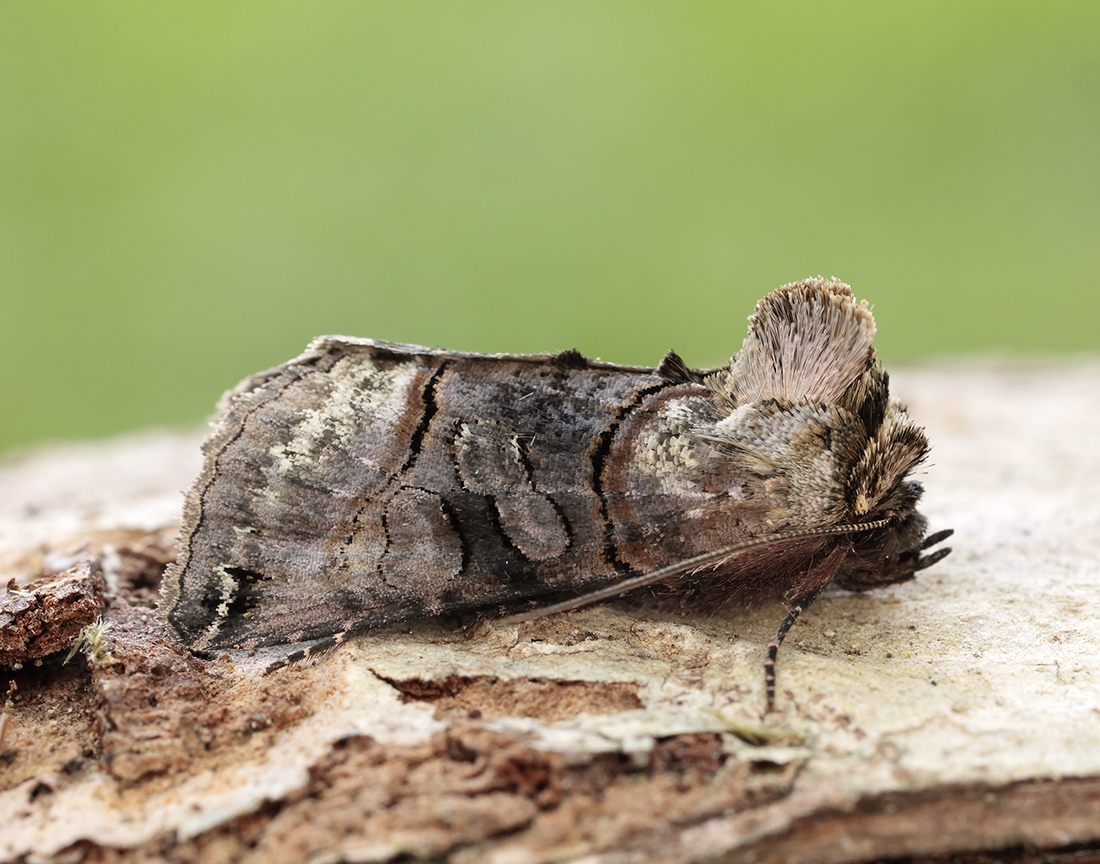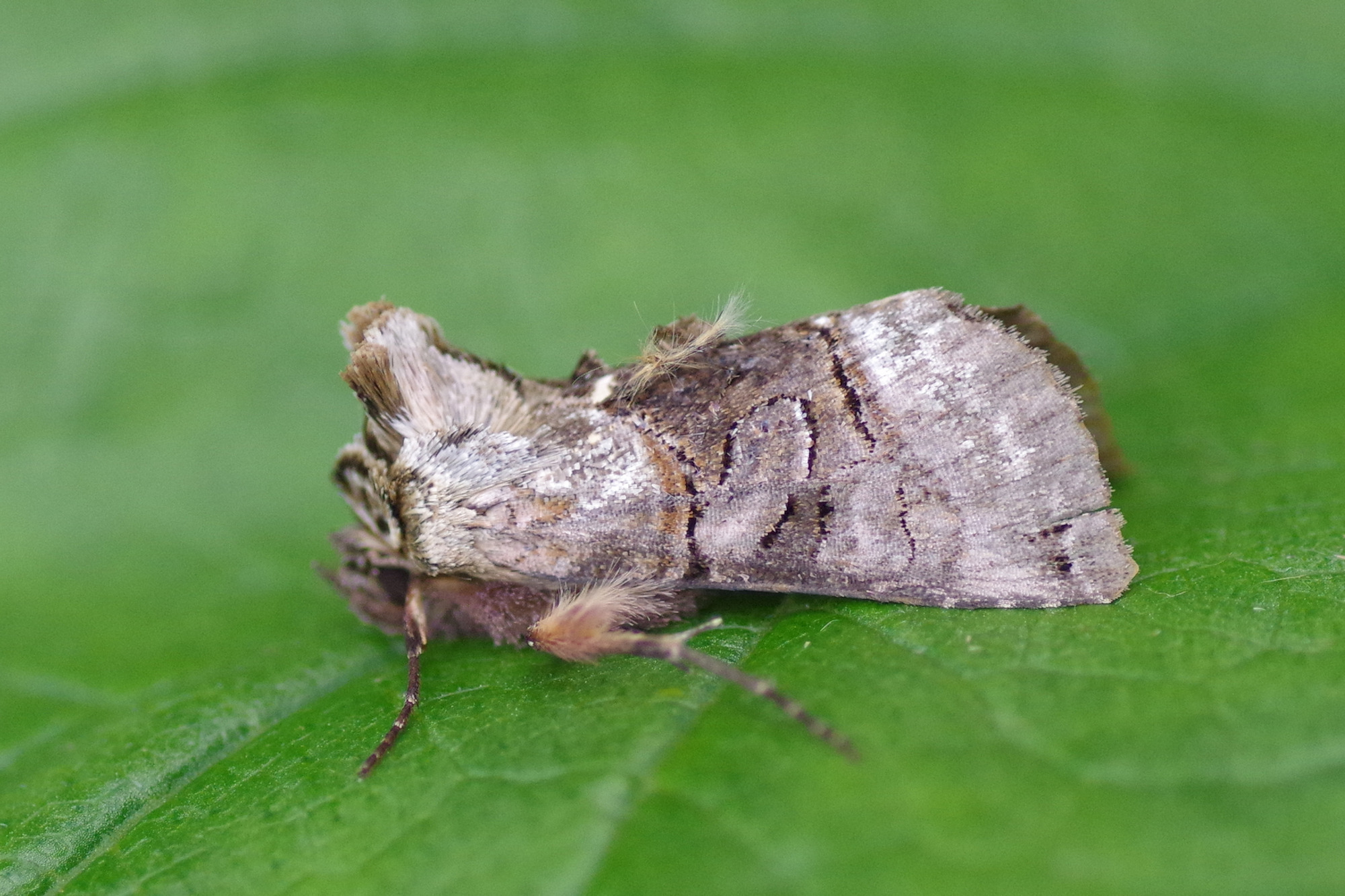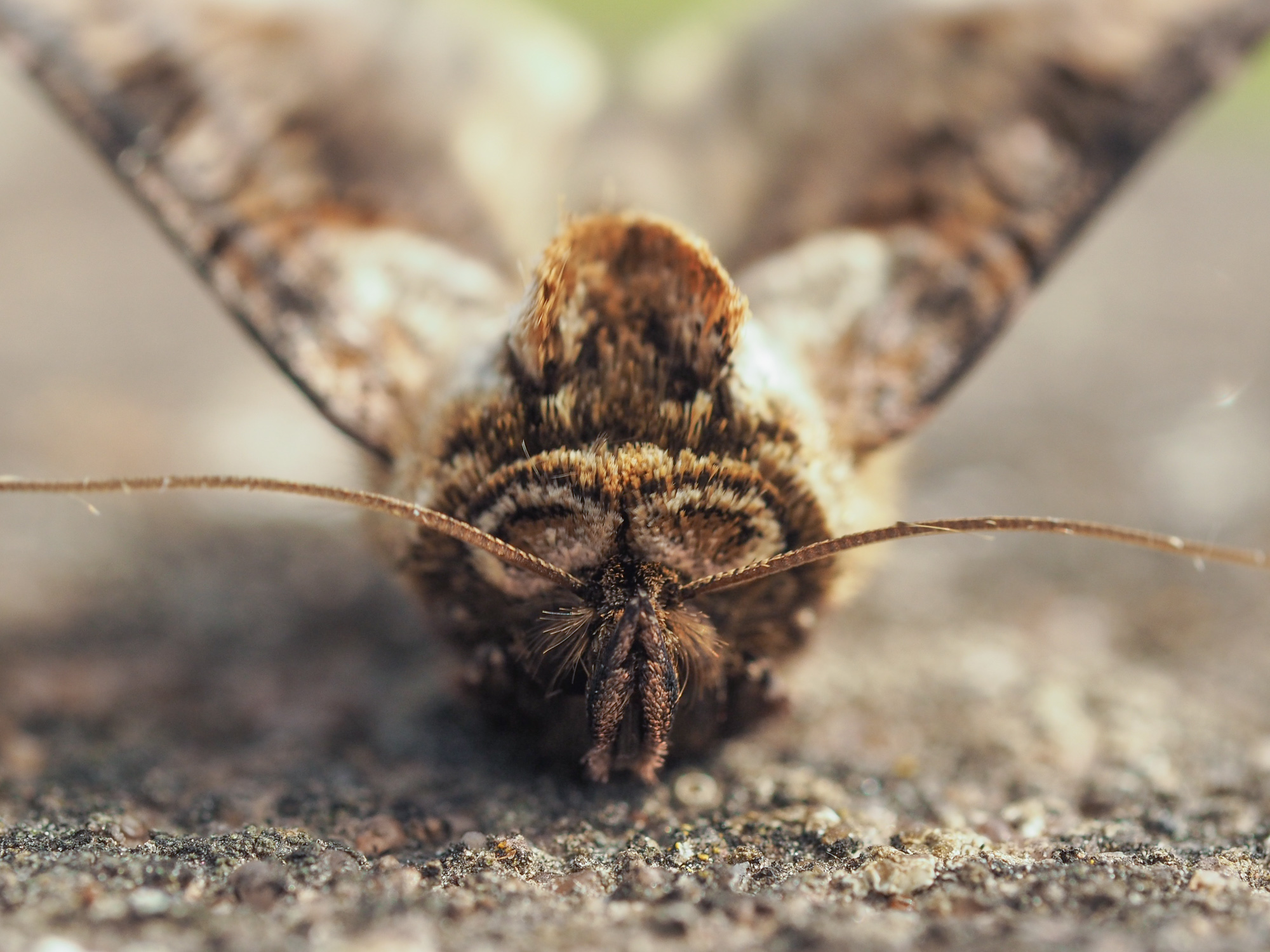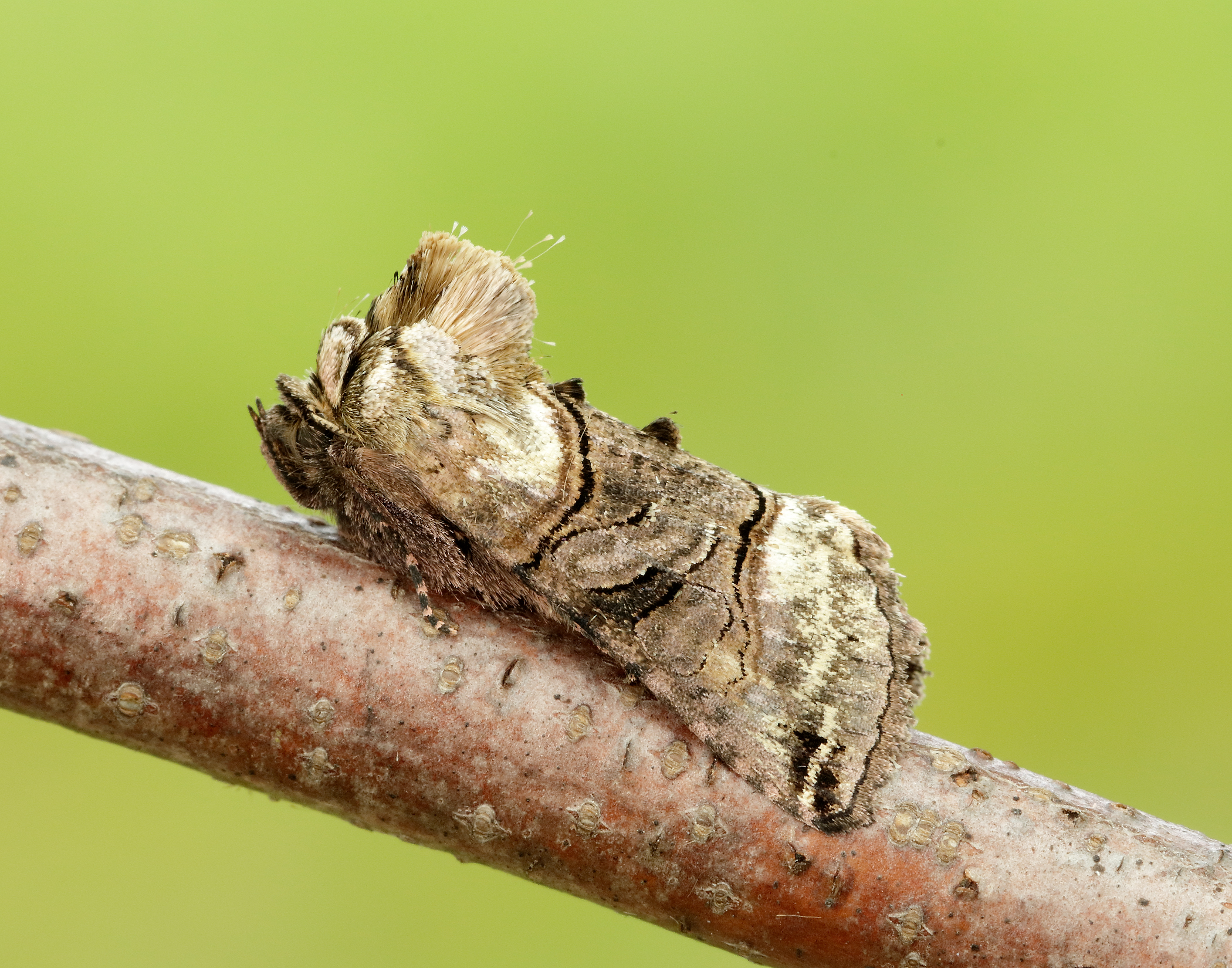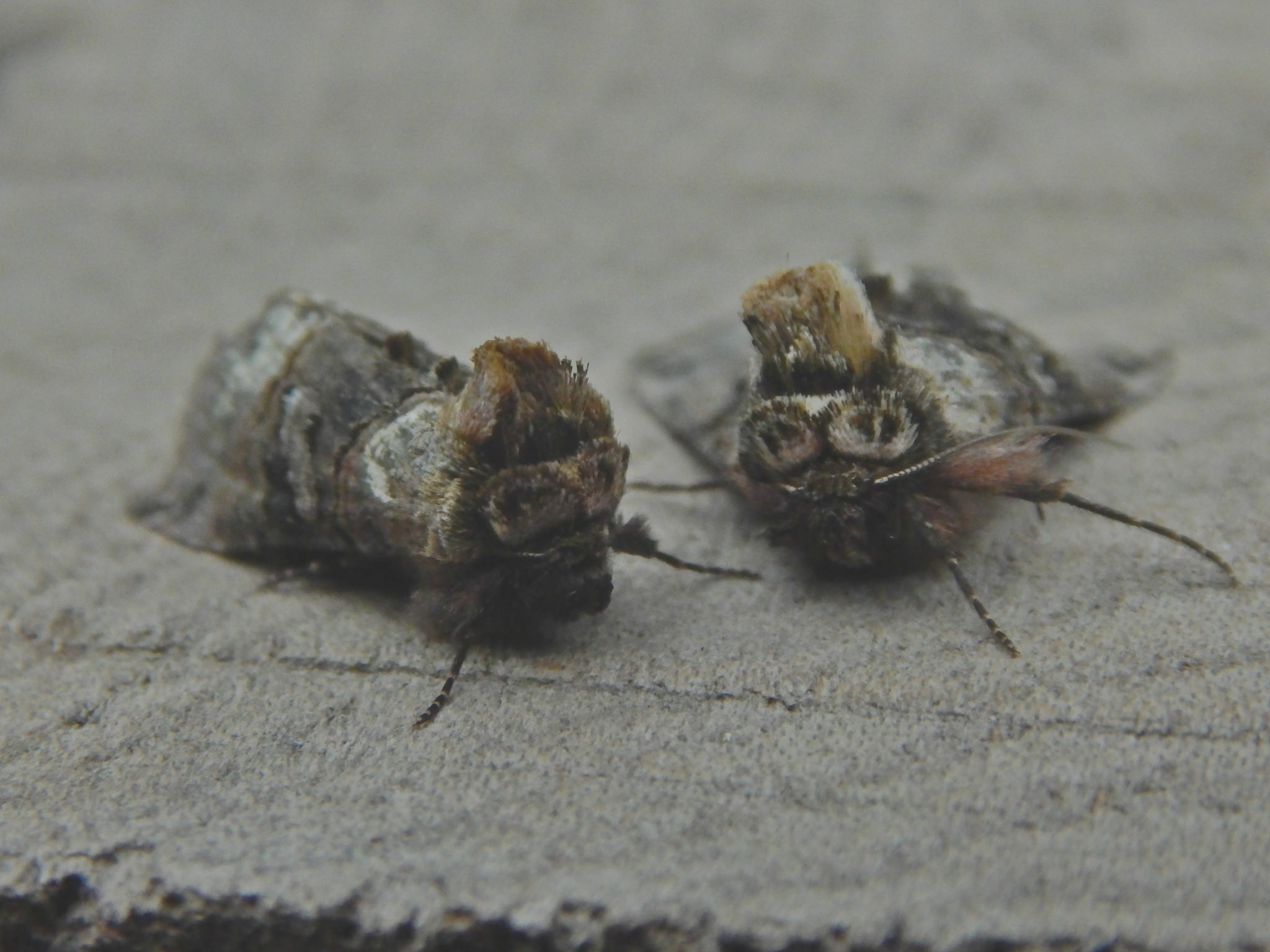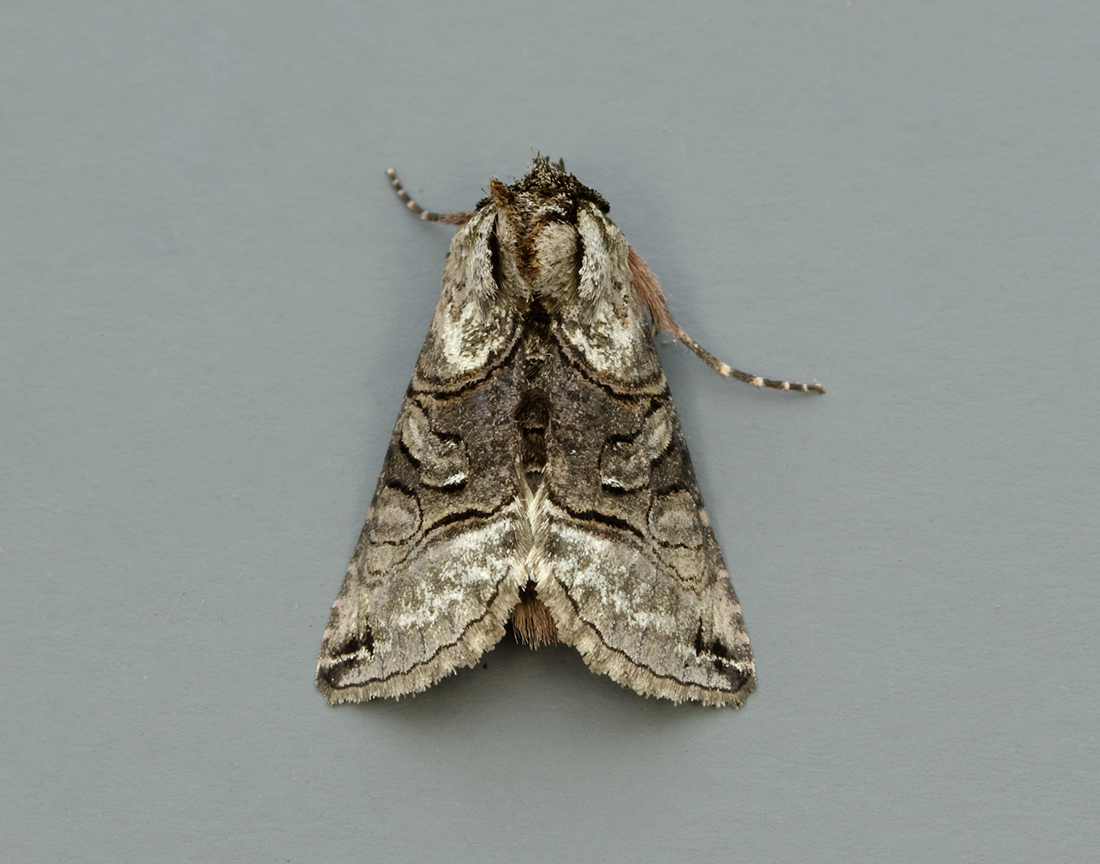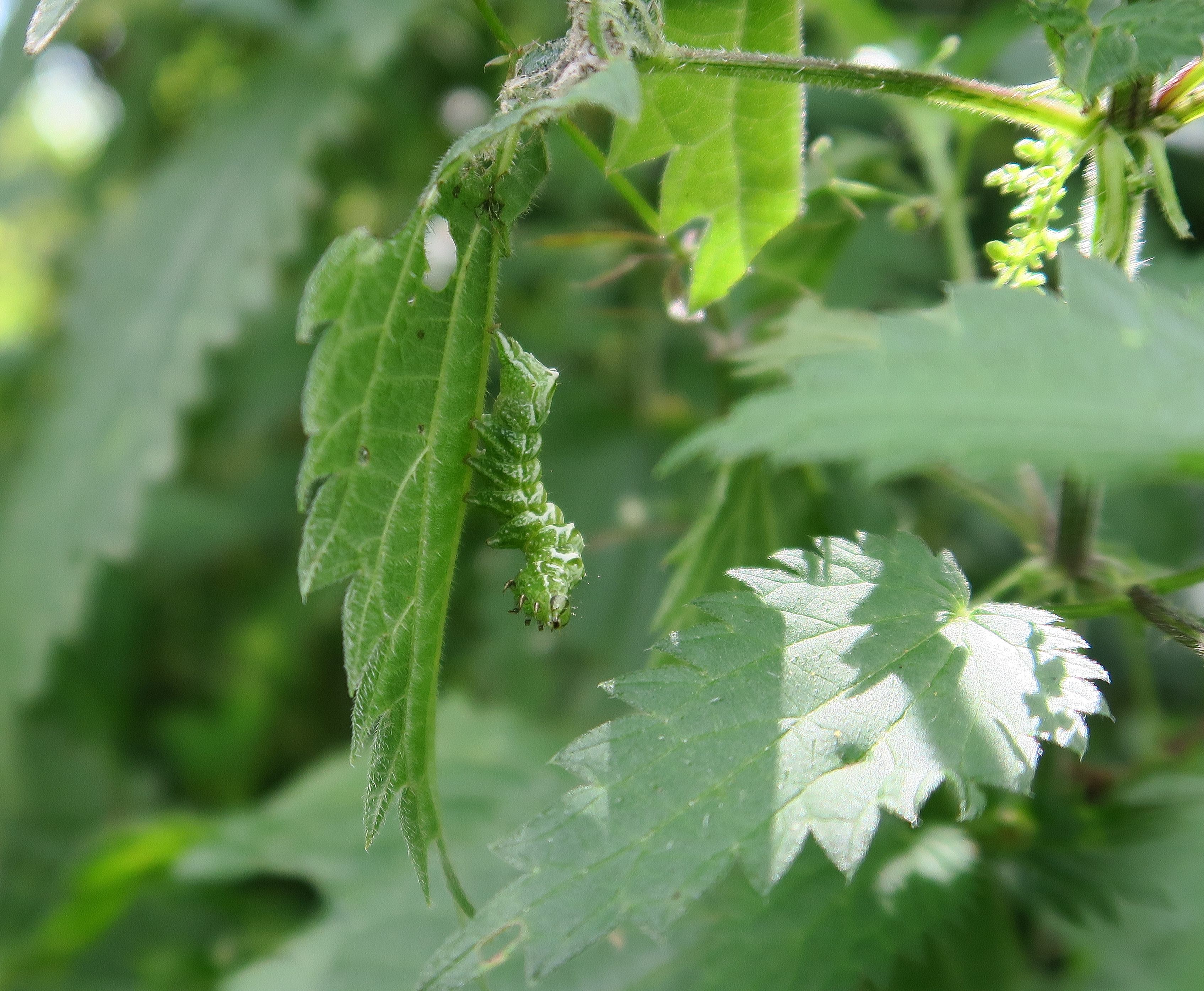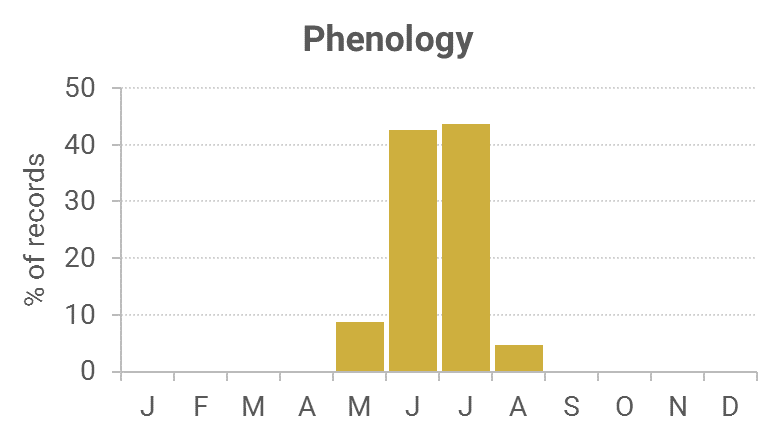Identification
Unmistakable when the ‘spectacles’ on the thorax are seen from the front. Care required to distinguish from Dark Spectacle.
Recording Method.
Attracted to light.
Life cycle
Probably two overlapping generations. Overwinters as a pupa. Larvae are present July to September, again, October to November.
Larval foodplants
Common Nettle.
Habitat
Gardens, woodland edges, fens, hedgerows and rough areas.
History
Somerville (1858) while on a visit to the Moffat area in August of that year had found the larvae on nettle. Lennon (1863) had only found it near Dalskairth (VC73). R. S. Gordon (1913) had found it common on various garden flowers at dusk during June around Corsemalzie (VC74). Earliest date was 1st June 1899.
Sir Arthur Duncan (1909-84) during his lifetime had found it at Closeburn, Tynron and Castlehill, Dumfries (VC72). Archibald Russell (1944) listed it as occurring near Gatehouse of Fleet during his stay in 1942-43.
During 1974-93 all seven Rothamsted stations recorded 170 records between them.
From 1993 to 2010 the regular trapped sites at Kirkton, Durisdeer, Cally Woods, Kirkland, Old Torr, Kirkcudbright, Carsfad at Dalry and Mersehead RSPB provided most of the 450 records during that period, with the others from widely scattered sites across the region.

